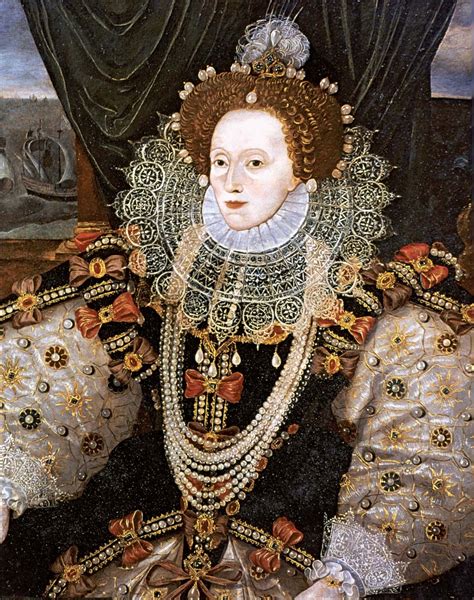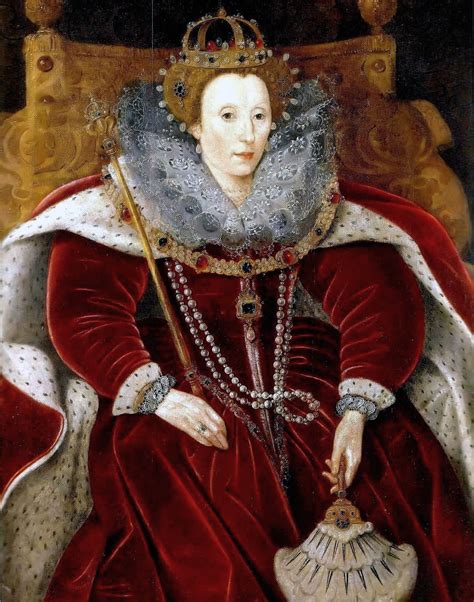why you will chose elisabeth first tudor | elizabeth the king of england why you will chose elisabeth first tudor Read a detailed account about Queen Elizabeth I. Discover why she's considered to be one of the country's most successful and popular monarchs. $5,337.00
0 · queen elizabeth i right to the throne
1 · elizabeth the queen of england
2 · elizabeth the king of england
3 · elizabeth the first princess
4 · elizabeth the first childhood
5 · elizabeth the 1st daughter
6 · elizabeth 1st of england
7 · did elizabeth return to england
And I say that because it was in 2020 that Rolex updated the Submariner, releasing the new 41mm ref. 124060 with its bigger case and wider lugs, but ultimately a sleeker design. That watch carried a price tag of $8,100. And the price maintained in 2020, and 2021. The 41mm Rolex Submariner ref. 124060.
Credit: François Clouet / Commons. How did Elizabeth handle the question of who her successor would be? Elizabeth knew exactly what she .

panerai radiomir logo pam 380
Elizabeth I (7 September 1533 – 24 March 1603) was Queen of England and Ireland from 17 November 1558 until her death in 1603. She was the last monarch of the House of Tudor. Elizabeth was the only surviving child of Henry VIII and his second wife, Anne Boleyn. When Elizabeth was two years old, her parents' marriage was annulle.In this week's Claire Chats talk, I am continuing my series on the Tudor monarchs, and examining their reigns for "the good, the bad, the ugly", i.e. their achievements and the not-so-good stuff, . Read a detailed account about Queen Elizabeth I. Discover why she's considered to be one of the country's most successful and popular monarchs.

queen elizabeth i right to the throne
Queen Elizabeth I was the last monarch of the Tudor dynasty, who ruled England between 1558 and 1603. The daughter of Henry VIII and Anne Boleyn, Elizabeth became Queen aged 25, at .Key learning points. Elizabeth succeeded her sister Mary I to the throne. Elizabeth had foreign suitors in marriage such as Philip II of Spain . There were rumours of Elizabeth loving the Earl .
By not marrying, Elizabeth I threw into question her succession. Elizabeth was intelligent enough to realise that other nations had faced huge problems when there was a succession crisis or when there were even doubts .James was Elizabeth's nearest royal relative; both were direct descendants of Henry VII, the first Tudor king. Yet in English law James's claim was uncertain. Since 1351, foreigners were . Elizabeth I (Born Princess Elizabeth; September 7, 1533–March 24, 1603) was Queen of England and Ireland from 1558 to 1603, the last of the Tudor monarchs. She never married and consciously styled herself as the Virgin . Known For: Queen of England from 1558–1603, known for defeating the Spanish Armada and encouraging cultural growth; Also Known As: Princess Elizabeth, the Virgin Queen; Born: September 7, 1533 in Greenwich, .
elizabeth the queen of england
elizabeth the king of england
When Elizabeth was first placed in the Tower she requested, no begged, to write to her sister and plea her case. . 11 thoughts on “The Relationship Between Mary and Elizabeth Tudor” . (sort of a love-hate relationship), but deep down they loved each other. Thats why Elisabeth at the end, chose to rest alongside Mary. Diane Browne. July .

Early Life. Elizabeth was born 7 September 1533 at Greenwich Palace, the daughter of Henry VIII of England (r. 1509-1547) and Anne Boleyn (c. 1501-1536). The princess was named after her grandmother, Elizabeth of York .
Elizabeth Tudor was born on 7 September 1533 at Greenwich Palace. She was the daughter of King Henry VIII and his second wife, Anne Boleyn.Henry had defied the papacy and the Holy Roman Emperor to marry Anne, spurred on by love and the need for a legitimate male heir.Queen Elizabeth’s Family Tree
During her reign, Elizabeth I had many suitors, but still refused to marry. This is why Elizabeth I was called the ‘the Virgin Queen’.. Some historians believe that Elizabeth I decided against having a husband to make sure that England stayed safe away from foreign rule.Queens were expected to marry during the Tudor era and most of their husbands were .Elizabeth I was a Tudor monarch who ruled England from 1558 - 1603. Despite her long reign, Elizabeth was never expected to become queen. She was last in line to the throne of all of Henry VIII . In fact, when people ask me why I have this crazy Tudor obsession, I truly cannot tell them what it is that appeals to me so. I honestly cannot remember what sparked my interest in Queen Elizabeth I (she was the first Tudor I knew), or why I chose to sit at the desk closest to her poster in 10th-grade English class.Mary and Elizabeth Tudor were each presented with the most stringent gender expectations of the Tudor era, and how they chose to meet or ignore those expectations would define their success, or failure, as rulers. Gender Expectations in the 16th Century The Tudor queens’ plight can be explained by understanding the sixteenth century home
Queen Elizabeth I, one of England's most iconic and influential monarchs, ruled during a time of significant political, religious, and cultural upheaval. Her decision to remain unmarried throughout her reign has been a subject of fascination and speculation. At a time when royal marriages were instrumental in forging alliances, ensuring succession, and stabilizing monarchies, Elizabeth's .It is the later development of Elizabeth’s reputation that is responsible here, and although this is dealt with in the catalogue (Elizabeth, ed. Susan Doran (London: Chatto & Windus and the National Maritime Museum, 2003)), it could have been called into question more vigorously by the exhibition itself. The fact that this exhibition is being .
Elizabeth I (7 September 1533 – 24 March 1603) [a] was Queen of England and Ireland from 17 November 1558 until her death in 1603. She was the last monarch of the House of Tudor.. Elizabeth was the only surviving child of Henry VIII and his second wife, Anne Boleyn.When Elizabeth was two years old, her parents' marriage was annulled, her mother was executed, . Since men commanded more authority and respect than women in Tudor England, Elizabeth would have become the Queen Consort had she married, essentially losing all of her power. Elizabeth was probably also sobered by her father's multiple marriages, some of which ended in executions.
A female firstborn could now be first in line to the throne, meaning that if William and Kate’s first child had been a girl, she would eventually become queen. Nearly five centuries earlier, on 17 November 1558, the 25-year-old Elizabeth Tudor became queen of England following a series of impossible-to-predict events. Elizabeth was a different kind of Queen: quick-witted, clever and able to use feminine wiles to get her own way. Elizabeth could be as ruthless and calculating as any king before her but at the . After Henry’s death in 1547, two of Elizabeth’s half-siblings would sit on the throne: first the young Edward VI, who reigned for six years, and then Mary I (“Bloody Mary”), who reigned for five years.
Credit: François Clouet / Commons. How did Elizabeth handle the question of who her successor would be? Elizabeth knew exactly what she was doing. The moment you name your successor then people will look to them. She could never name Mary Queen of Scots because she was Catholic, and that just wasn’t going to happen.
elizabeth the first princess
She was the last monarch of the House of Tudor. Elizabeth was the only surviving child of Henry VIII and his second wife, Anne Boleyn. When Elizabeth was two years old, her parents' marriage was annulled, her mother was executed, and Elizabeth was declared illegitimate.In this week's Claire Chats talk, I am continuing my series on the Tudor monarchs, and examining their reigns for "the good, the bad, the ugly", i.e. their achievements and the not-so-good stuff, by looking at the reign of Queen Elizabeth I, who ruled from 1558 to 1603. Read a detailed account about Queen Elizabeth I. Discover why she's considered to be one of the country's most successful and popular monarchs.Queen Elizabeth I was the last monarch of the Tudor dynasty, who ruled England between 1558 and 1603. The daughter of Henry VIII and Anne Boleyn, Elizabeth became Queen aged 25, at a time of political crisis. The 'Virgin Queen' never married, .
Key learning points. Elizabeth succeeded her sister Mary I to the throne. Elizabeth had foreign suitors in marriage such as Philip II of Spain . There were rumours of Elizabeth loving the Earl of Leicester. By 1580 Elizabeth used propaganda to present herself as the 'Virgin Queen' after rejecting all suitors.
By not marrying, Elizabeth I threw into question her succession. Elizabeth was intelligent enough to realise that other nations had faced huge problems when there was a succession crisis or when there were even doubts as to .James was Elizabeth's nearest royal relative; both were direct descendants of Henry VII, the first Tudor king. Yet in English law James's claim was uncertain. Since 1351, foreigners were forbidden to inherit English lands, which might block James from inheriting the Crown and its estates.
elizabeth the first childhood
Find many great new & used options and get the best deals for Creed Aventus 3.4 fl oz Men's Eau de Parfum 19y11n at the best online prices at eBay! Free shipping for many products!
why you will chose elisabeth first tudor|elizabeth the king of england



























